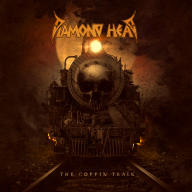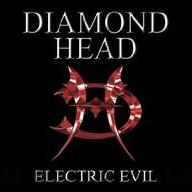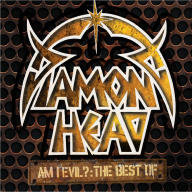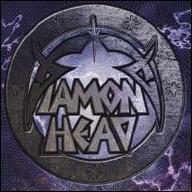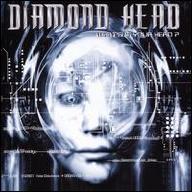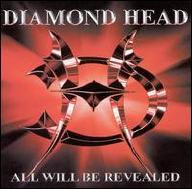Diamond Head formed in Stourbridge, England, in 1976 by schoolmates Brian Tatler (guitar) and Duncan Scott (drums). They soon recruited Sean Harris (vocals), and a few months later, Colin Kimberley (bass) joined their ranks. Barely out of school and vehemently opposed to joining the cover band pub circuit, the fledgling young band also had the heyday of punk rock to contend with and were forced to develop their sound in relative seclusion through endless rehearsal and songwriting sessions. Still unable to attract any record company attention three years later despite occasional gigs in and around the English Midlands, the group decided to take matters into their own hands, issuing a couple of self-financed singles, "Shoot out the Lights" and "Sweet and Innocent." These were soon followed by a self-produced full-length album, which they recorded between February and April 1980 and made available via mail order through their own Happy Face Records. By naïve inexperience or artful design, the LP was packaged in a conspicuously anonymous white sleeve, lacking so much as song titles, and sent to members of the British music press. As it turned out, a copy of the nameless LP (later commonly referred to as the "White Album" or "Lightning to the Nations," after its first song) soon found its way into the hands of Sounds metal editor Barton, who was so floored by its contents he quickly proceeded to interview the band for the respected music weekly. Soon being heralded by most everyone in-the-know as an undeniable masterpiece, the album quickly passed into legend as one of the New Wave of British Heavy Metal's most seminal documents. Indeed, between Tatler's towering power chords and Harris' delicate yet muscular voice, Diamond Head had stumbled upon the perfect synthesis of ungodly, Sabbath-sized riffing and Zeppelin's epic musicality.
If only the rest of the story was as remarkable. Encouraged by such a euphoric response, Diamond Head quickly signed with MCA, issued the Four Cuts EP, then set out on a relentless touring schedule that included a legendary appearance at the 1982 Reading Festival. But the dream began to shatter as soon as they entered the studio to begin recording a follow-up album. MCA's and producer Mike Hedges' excessive tampering and the band's inability to just say "no" transformed Borrowed Time into a disappointing, vague reminder of their glorious first album (the fact that Sean Harris' mum acted as their manager didn't help matters any). For their part, as brilliant as they were at composing complex heavy metal anthems, Tatler and Harris proved incapable (or subconsciously unwilling) to pen radio-friendly singles. Re-recorded versions of first album standouts "Am I Evil?" and "Lightning to the Nations" also paled in comparison to the genuine articles, and though it entered the British charts at a very respectable number 24, Borrowed Time quickly fulfilled the prophecy in its title and tumbled from sight. As initial expectations gave way to disappointment and pressure began to mount, the band started work on their third album. But they would splinter in half during the sessions for 1983's erratic Canterbury, with the rhythm section of Kimberley and Scott both fired and/or quitting. Another commercial failure, the LP's chances were further curtailed by a pressing error that resulted in 20,000 faulty copies. A slot at that year's massive Castle Donington Monsters of Rock Festival couldn't staunch the bleeding, and a frazzled Tatler (by now standing on the brink of a nervous breakdown) finally pulled the plug. Diamond Head effectively ceased to exist.
Here's where things get interesting, however, for among the band's early worshipers was a young Danish drummer named Lars Ulrich, who had been so deeply affected by Diamond Head's early material that he proceeded to pattern his own brand-new group (future metal gods Metallica) on their idiosyncratic style. Not only did Metallica base the bulk of their early live set on Diamond Head's songs, they also covered the first album's "Am I Evil?" for the B-side to their "Creeping Death" single in 1984, and later repeated the gesture with "Helpless" in 1987. This unexpected exposure began to slowly resurrect Diamond Head's music among fans, and when Tatler and Ulrich finished compiling a greatest-hits disc, released later that year as Behold the Beginning, unsuspecting American audiences were also finally given their first glimpse of Diamond Head. But, Tatler remained wary of attempting a complete comeback and it wasn't until 1993 that he again teamed up with Harris, bassist Pete Vuckovic, and drummer Karl Wilcox for a set of club dates under the name Dead Reckoning. The full-fledged reunion was made official by a new album, entitled Death Progress (featuring guest performances and songwriting contributions from Black Sabbath's Tony Iommi and Megadeth's Dave Mustaine), which nevertheless failed to ignite serious interest in the band. Following a number of high-profile concert appearances in the U.K. that summer, Diamond Head once again disbanded, but not before releasing the Evil Live album, recorded at their Milton Keyes performance where they supported Metallica, ironically enough.
A slew of unsatisfactory greatest-hits sets has been released in the years since, but it wasn't until 2001 that fans were finally treated to a fully restored reissue of Diamond Head's legendary debut by Sanctuary/Castle. Their desire to promote the long-lost classic led to another reunion, which included Diamond Head's first-ever performance on U.S. soil at the New Jersey Metal Fest on April 5, 2002. 2003 saw the band part ways with Sean Harris and enlist Nick Tart to take over vocal duties. Two years later, Diamond Head issued their first new studio album since 1993, All Will Be Revealed. The band would endure numerous lineup changes in the years to come, but they would also remain quite active, touring heavily and releasing a number of live albums and a pair of generally well-received studio outings, including 2007's What's in Your Head and 2016's eponymous Diamond Head, the latter of which featured new vocalist Rasmus Bom Andersen, and 2019's The Coffin Train. ~ Eduardo Rivadavia, Rovi
|
1
|
|
Am I Evil? |
|
2
|
|
The Prince |
|
3
|
|
Helpless |



